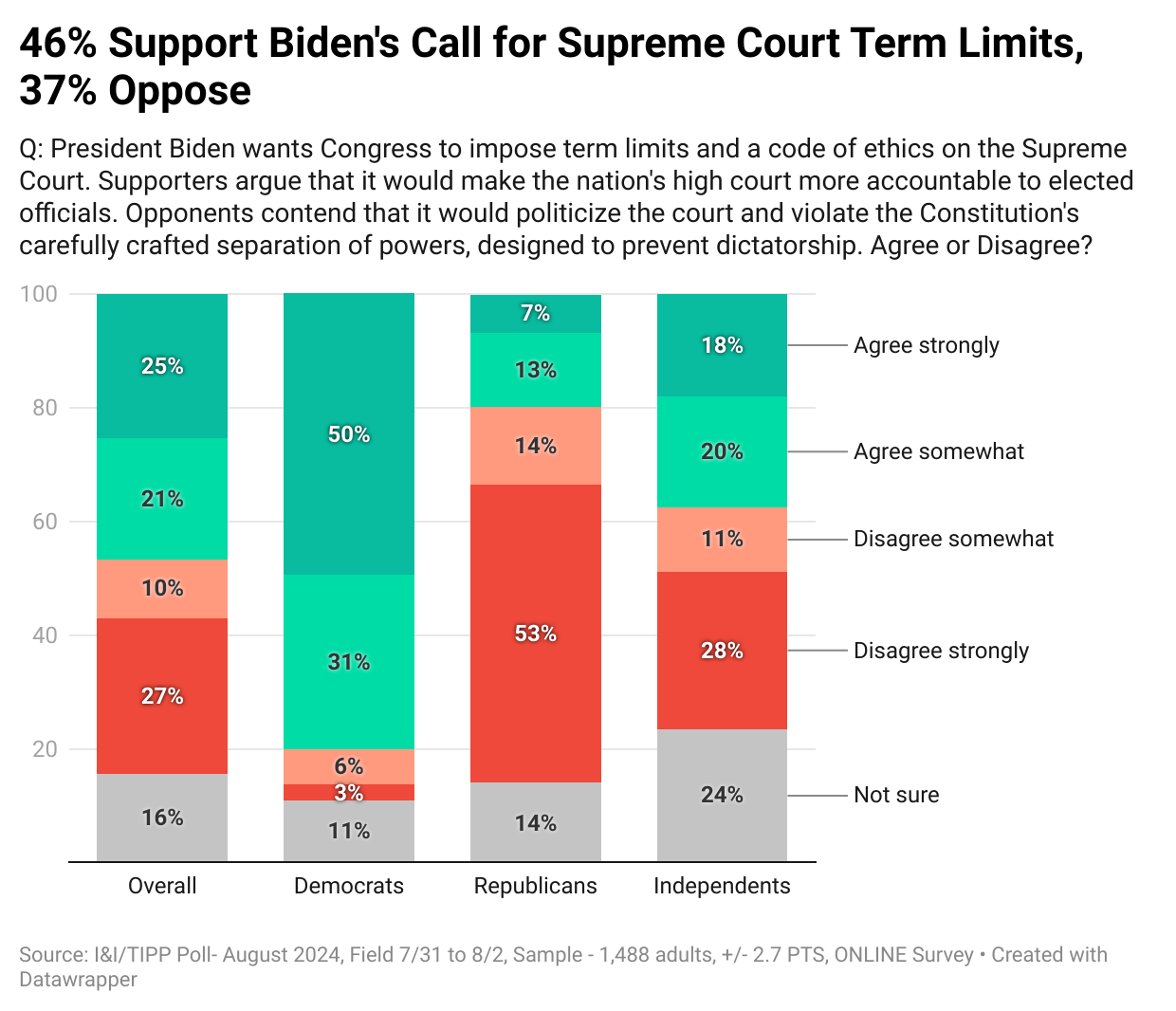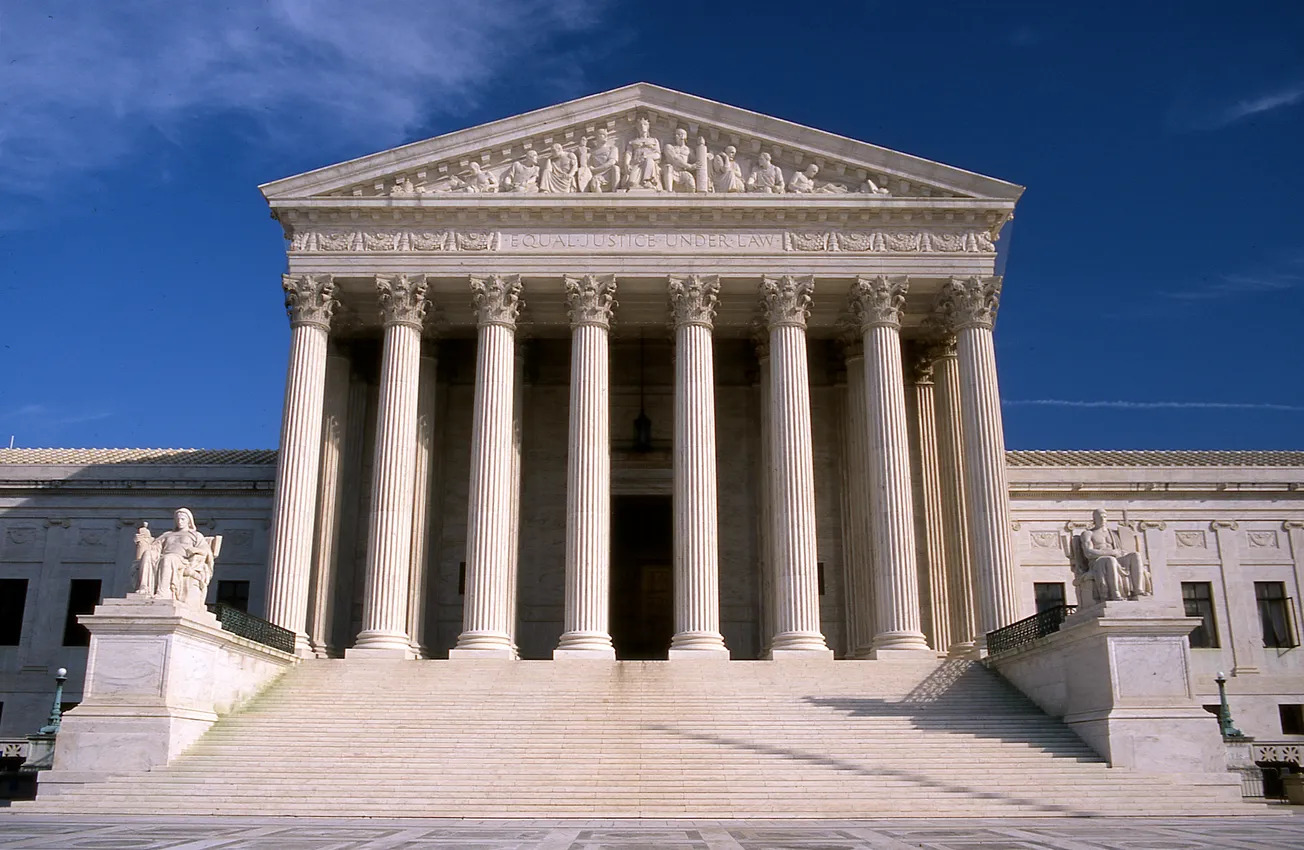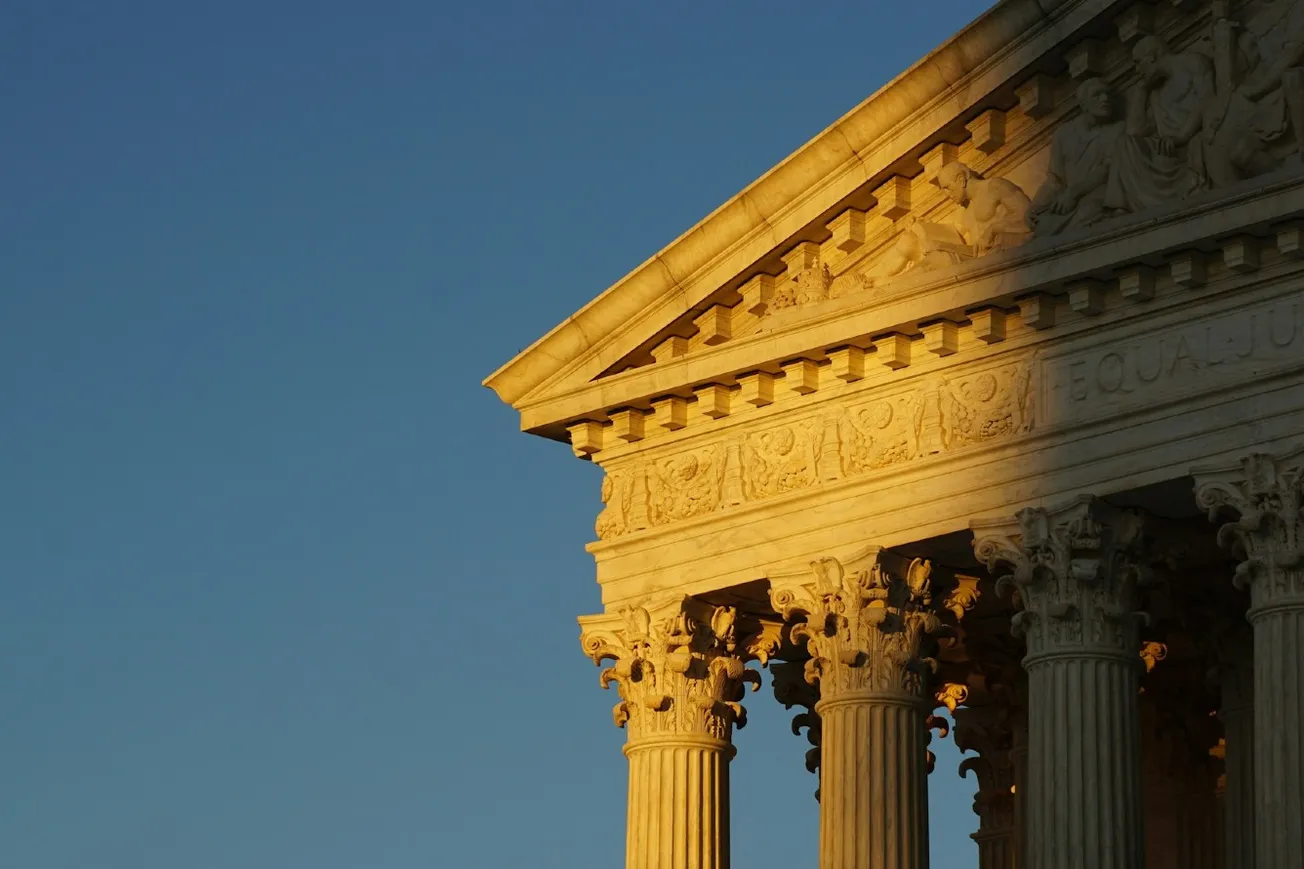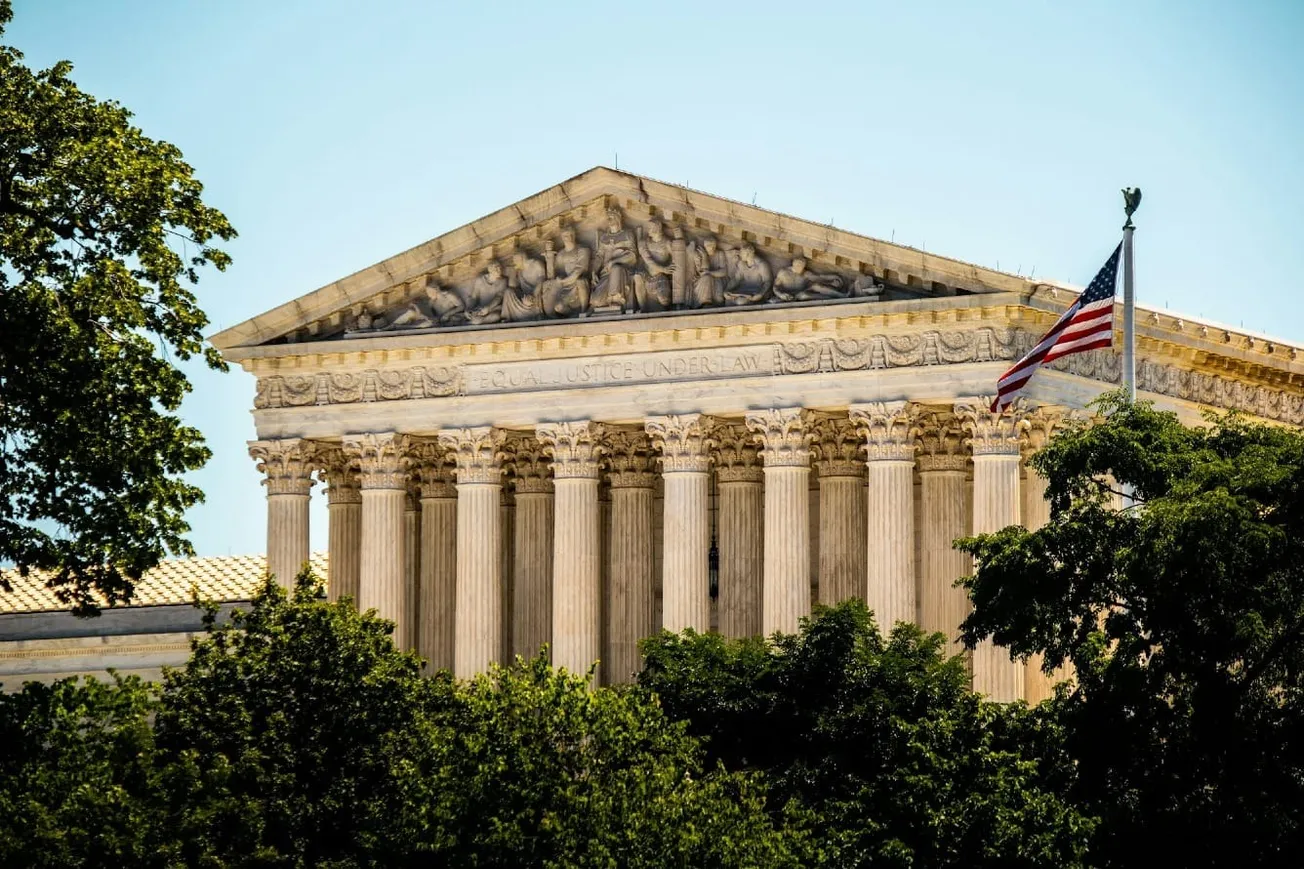President and former Democratic Party candidate Joe Biden made clear his disdain for the current U.S. Supreme Court by proposing that justices have term limits and by imposing a “code of ethics” on its members. A plurality of Americans agree, the latest I&I/TIPP Poll shows, but the poll reveals a sharp political schism emerging over the issue.
Depending on which party wins, the next Congress will decide whether the limits on the justices will go into effect or whether the plan gets deep-sixed. For the Supreme Court, the stakes will be high.
In the national online I&I/TIPP Poll of 1,488 adults taken from July 31 -Aug. 2, Americans were asked the following question:
“President Biden wants Congress to impose term limits and a code of ethics on the Supreme Court. Supporters argue that it would make the nation’s high court more accountable to elected officials. Opponents contend that it would politicize the court and violate the Constitution’s carefully crafted separation of powers, designed to prevent dictatorship.
“To what extent do you agree or disagree with Biden’s plan?”
Respondents were given five possible responses: “Agree strongly,” “Agree somewhat,” “Disagree somewhat,” “Disagree strongly,” and “Not sure.” The poll has a margin of error of +/-2.7 percentage points.
Overall, 46% said they either agreed strongly (25%) or somewhat (21%), while a total of 37% said they either disagreed somewhat (10%) or strongly (27%). A fairly large group, 16%, wasn’t sure.
Note that the share that opposes Biden’s idea strongly, at 27%, is slightly larger than the share that supports it “strongly,” at 25%. So while having a plurality, the Biden proposal’s supporters are overall less intense than their opponents.
Looking at the data a bit closer reveals other sharp fissures in public opinion, mostly along party lines.
Start with the Democrats, the party that initiated the proposal. An overwhelming 81% agree, while only 9% disagree, with the proposal for limits on the court.
Among Republicans, meanwhile, 67% disagreed, while 20% agreed. Independents, often the straddle vote, disagreed 39% to 38%, too close to call and within the margin of error.

Then there’s the male/female split. While virtually the same on whether they agree (41% male, 42% female), that’s where the agreement ends. The “disagree” vote split is much bigger, with men at 50% and women at just 38%. In short, men oppose the idea, and women mostly support it.
This potentially momentous proposal — put forward by Biden on July 29, just a week after surrendering his presidential campaign under intense pressure from his own party — didn’t emerge from nothing.
The political left in general and Democrats in specific have fretted over the court’s moderate-to-conservative majority, which has overturned several lower-court decisions and federal laws long cherished by liberal Democrats.
In just the last session, the court expanded presidential immunity, and overturned the doctrine of “Chevron deference,” which reduced federal bureaucrats’ power to make laws.
“Extremism is undermining the public confidence in the court’s decisions,” Biden said in late July, announcing his court reform plans at the Lyndon Baines Johnson Presidential Library in Austin, Texas. He added that the court had “undermined long established civil rights principles, and protections,” including the weakening of affirmative action in higher education, and revamping enforcement of the Voting Rights Act.
But one ruling in recent years stands out: The high court’s June 2022 repeal of the 1973 Roe v. Wade decision, which created a national constitutional right to abortion. That decision had been a centerpiece of left-right debate for over five decades. Now, it’s left up to the individual states.
The argument has sharpened of late, especially as abortion advocates have pushed for a right to abortion even up to birth, but now must face 50 separate state legislatures to get what they want. “The downfall of the constitutional right to abortion began 12 years ago (in 2010), after Republicans swept state house elections and passed hundreds of restrictions,” asserted The New York Times in 2022.
In recent months, in addition to Biden’s move, Democratic New York Rep. Alexandria Ocasio-Cortez has proposed impeaching both Justice Samuel Alito and Justice Clarence Thomas, two of the most conservative voices on the current court, supposedly because of “gifts” they received from outside the Court and their wives’ involvement in political movements.
While candidate Kamala Harris backs Biden’s move, for now it seems highly unlikely that Biden’s proposal will either get passed or even brought to the floor in congress.
House Speaker Mike Johnson, for instance, said it’s “dead on arrival,” calling out Biden for trying to “radically overhaul” the court in an election year. So if the House remains in Republican hands, any bill to reform the Supreme Court won’t happen.
More to the point, the Supreme Court’s powers and functions are defined by the Constitution, which foresaw three co-equal branches of government and made it very difficult for one branch to meddle in the affairs of another. Changing that arrangement likely will require a constitutional amendment.
In case you’re wondering, here’s what a constitutional amendment entails, as described by the White House’s own website:
An amendment may be proposed by a two-thirds vote of both Houses of Congress, or, if two-thirds of the States request one, by a convention called for that purpose. The amendment must then be ratified by three-fourths of the State legislatures, or three-fourths of conventions called in each State for ratification.
It’s a long, arduous process. Altering the Constitution for political purposes is one of the hardest things to do. It is so by the founders’ own design. As Donald Trump himself said told Fox News, “It’s going nowhere. They need 75% (of the states). He (Biden) can’t get it. He knows that too.”
I&I/TIPP publishes timely, unique, and informative data each month on topics of public interest. TIPP’s reputation for polling excellence comes from being the most accurate pollster for the past five presidential elections.
Terry Jones is an editor of Issues & Insights. His four decades of journalism experience include serving as national issues editor, economics editor, and editorial page editor for Investor’s Business Daily.









